Table of Contents
ToggleFrom Mid-Century to Minimalist: Your Complete Guide to 2025 Interior Design Styles
Have you ever stepped into a room and immediately felt a profound sense of connection? That seamless blend of comfort, beauty, and unique personality doesn’t happen by chance. It’s the outcome of a carefully curated interior design style. However, with an array of terms like “Japandi,” “Transitional,” and “Biophilic” circulating in the design world, discovering the aesthetic that resonates deeply with your own preferences can seem a bit daunting and overwhelming.
Consider this your ultimate handbook.
Whether you’re embarking on a design journey with a completely blank canvas or aiming to rejuvenate your current space, this guide will unravel the complexities of the most popular interior design styles in 2025. We’ll delve into timeless classics that have stood the test of time, explore innovative modern trends that are capturing the imagination, and equip you with the insights necessary to shape a home that authentically represents who you are. Join us as we dive in and uncover the unique style that best captures your essence.
The Foundations: Timeless and Classic Styles
Certain design aesthetics surpass fleeting trends, establishing a timeless quality of elegance and sophistication that endures indefinitely. These styles are deeply rooted in historical influences, emphasizing a sense of order and incorporating luxurious details that collectively create a comforting and curated environment. Such a setting feels both grand and welcoming, offering a lasting appeal that resonates with grace and charm.
Traditional Style: The Epitome of Elegance
Traditional design beautifully embraces the of classic art, history, and comfort, crafting spaces that echo stability and charm. Rooted in 18th and 19th-century European decor, it creates interiors that exude a sense of order and tranquility, offering predictability that is soothing and welcoming.
Key Elements: Seek out symmetrical furniture setups and rich color schemes, such as deep reds, browns, and greens, which enhance the overall ambiance. Ornate details add an extra layer of sophistication. The furniture takes center stage, frequently showcasing dark, polished wood with intricate carvings and opulent upholstery. Materials such as velvet, silk, and leather are often used to emphasize a sense of luxury and comfort.
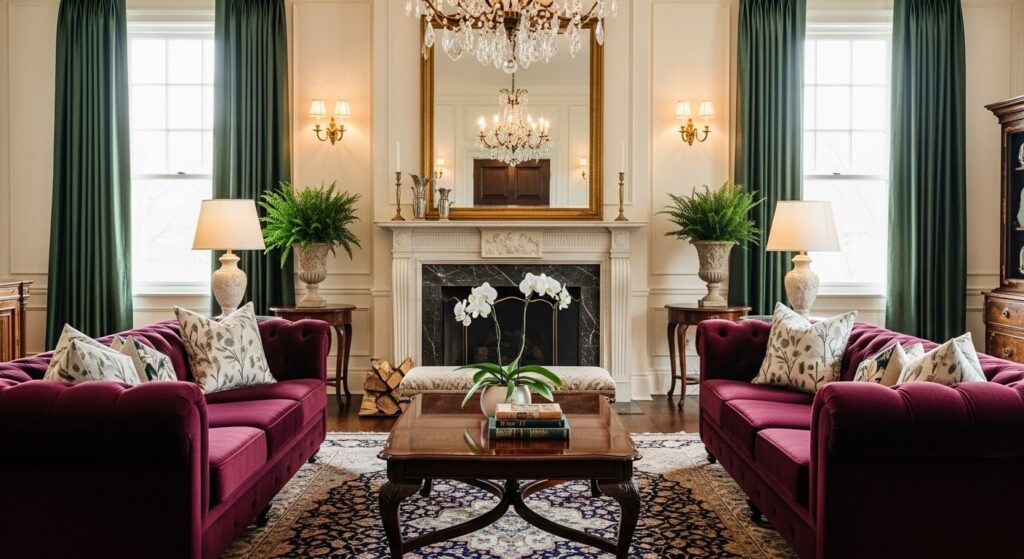
The Vibe: Serene, structured, and enduring in appeal, a traditional home embodies character and charm. It features classic furniture profiles, exquisite textiles, and a thoughtfully assembled collection of accessories and artwork, lending a sense of curation and timeless elegance that feels like it evolved seamlessly through the years.
Art Deco Influence: Sophisticated Glamour
Originating in the vibrant 1920s, Art Deco epitomizes luxury, glamour, and making bold statements. This refined style seamlessly combines sleek modern elements with rich ornamentation and exceptional craftsmanship.
Key Elements: Distinguished by bold geometric patterns such as chevrons, sunbursts, and zig-zags, this style captures attention with its dramatic flair. Its hallmark features include high-contrast color palettes that create striking visual impacts, along with the use of opulent materials. Imagine sleek lacquered wood finishes, gleaming metals like brass and chrome that reflect light beautifully, and mirrored surfaces that amplify the sense of space. Rich, jewel-toned velvets lend a lavish touch, enhancing the overall feel of sophistication and decadence.
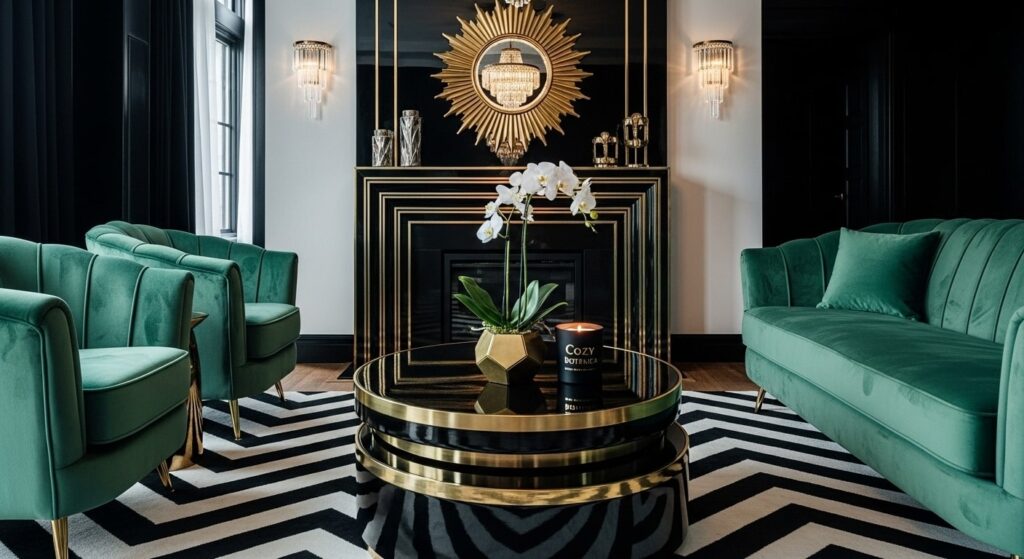
The Vibe: Art Deco interiors are characterized by their dramatic flair and luxurious feel, exuding confidence and elegance. These spaces are visually striking, embracing symmetry and a bold, unapologetic approach to design that makes a powerful statement.
The Modernist Movement: Clean Lines & Retro Vibes
Emerging in the mid-20th century, modernism marked a significant shift away from the overly ornate styles seen in previous eras. This design movement emphasizes simplicity, functionality, and a seamless connection between indoor and outdoor spaces. As a result, has introduced some of the most enduring and cherished aesthetics in the realm of home décor, focusing on clean lines and minimalist elements that continue to captivate homeowners and designers alike.
Mid-Century Modern: A Retro Revival
Considered one of the most favored styles in contemporary interior design, Mid-Century Modern, often abbreviated as MCM, encompasses the period from the 1940s to the 1960s. This style is deeply rooted in the principle of “less is more,” showcasing organic forms and a strong focus on functionality in its design ethos.
Key Elements: Mid-Century Modern furniture is renowned for its clean, straightforward lines and minimalist design. It is frequently constructed from natural, high-quality materials such as teak, rosewood, and walnut, reflecting its organic roots. When identifying iconic MCM pieces, seek out those with distinctive tapered legs and gentle, flowing curves that epitomize the elegance of this era. Notably, style eschews any fussy or excessive ornamentation, focusing instead on streamlined forms. The core of its aesthetic is the harmonious blend of functionality and beauty, ensuring that each piece is not only practical but also visually appealing.
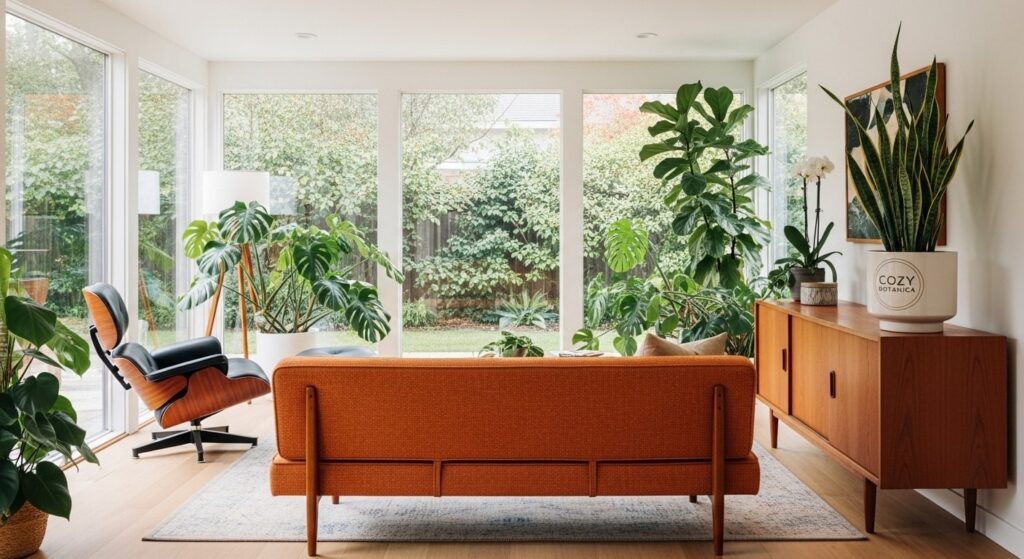
The Vibe: Mid-Century Modern design is characterized by its minimalist approach, prioritizing functionality and a sleek aesthetic that feels effortlessly chic. These spaces radiate a sense of nostalgic charm while maintaining an air of futuristic sophistication. A hallmark of this style is the seamless integration of furniture with architectural elements, creating a harmonious flow throughout the space. Natural light plays a crucial role in enhancing this ambiance, often streaming through expansive, unadorned windows that invite the outdoors in and amplify the clean lines and open feel of the interior.
Embracing Simplicity: Minimalist & Scandinavian Design
If you find beauty in simplicity and yearn for tranquility in uncluttered surroundings, consider embracing minimalist and Scandinavian designs for a serene sanctuary. These styles elegantly showcase a thoughtfully curated environment can create a lasting and profound impact.
Minimalist Aesthetics: The Art of "Less is More"
True minimalism doesn’t imply cold, barren spaces; rather, it’s a disciplined art form that emphasizes reducing elements to their core quality and function. Think of it as a process of thoughtful editing, where every item must justify its existence. It’s a deliberate move away from visual noise and clutter, championing the idea that more is not always better. Each piece of furniture, from a streamlined sofa to a single sculptural armchair, is chosen not only for its aesthetic appeal but for its indispensable role in the room’s utility. Every object and even the smallest detail is thoughtfully selected for its specific purpose and its rightful place. This intentionality gives rise to the most important element in minimalist design: negative space. The empty areas are just as critical as the objects themselves, allowing each piece to breathe and be appreciated for its form, texture, and craftsmanship. The result is a space that feels incredibly calm, uncluttered, and harmonious—a serene sanctuary where the mind can truly rest.
Key Elements: A neutral color palette serves as the cornerstone of minimalist design, typically composed of tranquil shades such as white, beige, and grey. These hues create a soothing backdrop that highlights the style’s key focus: clean lines, simple forms, and ample negative space. The intentional use of empty areas in a room not only allows the design to breathe but also emphasizes the importance of each individual piece. In such spaces, you will notice a deliberate and noticeable absence of clutter and ornamentation, ensuring that every element serves a purpose and contributes to the overall harmony of the environment.
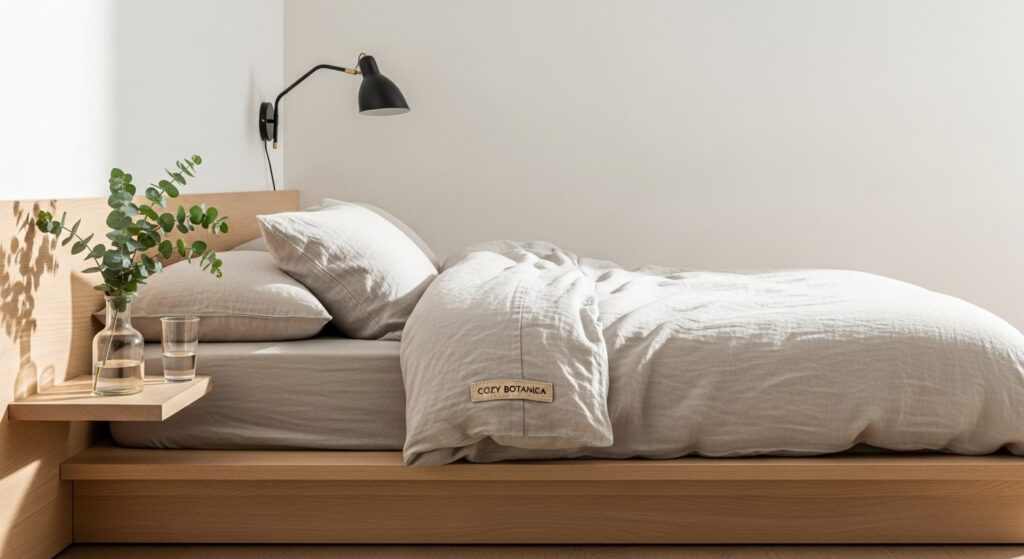
The Vibe: Serene, purposeful, and meticulously organized, a minimalist home offers a refreshing escape. It creates a visually soothing environment where every element is chosen with care, and the balance between form and function is perfectly achieved, promoting a sense of tranquility and order.
Scandinavian Influence: Cozy Functionality
Hailing from the Nordic regions, Scandinavian design seamlessly combines minimalist principles with an inherent focus on warmth and inviting coziness, encapsulated in the Danish concept of hygge. Developed in response to the long, harsh winters of the region, this style emphasizes bringing in ample light, fostering comfort, and maintaining a close connection to the natural world.
Key Elements: Light-toned woods such as pine, beech, and ash blend harmoniously with white walls to enhance brightness, forming the foundation of this style. While functionality remains central, it’s beautifully softened by luxurious textures like wool blankets, sheepskin rugs, and soft linen. Incorporating plants and abundant natural light completes the aesthetic.
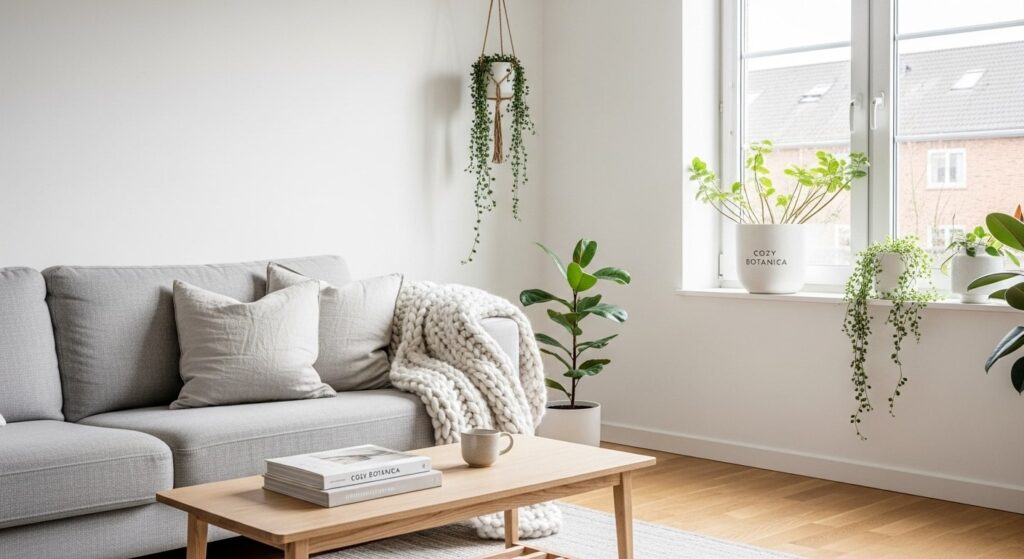
The Vibe:Filled with light, spacious, and elegantly simple, Scandinavian interiors offer a harmonious blend of practicality and beauty. These spaces manage to exude a sense of style while providing a profoundly comforting and cozy atmosphere.
Connecting with Nature: The Rise of Organic & Biophilic Styles
By 2025, the inclination to forge a deeper connection with nature has become more pronounced than ever before. This heightened desire has led to the emergence of design styles that not only prioritize the use of natural materials but also focus heavily on sustainability. These styles effortlessly blend the indoor and outdoor environments, creating a seamless transition that brings the essence of nature right into our living spaces.
Biophilic Design: Bringing the Outdoors In
Biophilic design extends far beyond the simple addition of a few potted plants to a room. At its core, this design philosophy is about fostering a profound and direct connection to the natural world within the confines of our living spaces. By seamlessly integrating elements of nature into interior architecture, this approach is proven to offer significant benefits, including enhanced well-being, reduced stress levels, and increased creativity.
Key Elements: Central to this design style is the emphasis on maximizing natural light and incorporating a diverse array of indoor plants, which together create a refreshing and vibrant atmosphere. Utilizing natural materials such as wood, stone, rattan, and bamboo ensures a strong link to nature, providing texture and visual interest. The color palette predominantly features earthy hues of greens, browns, and blues, successfully mimicking the serene beauty of the outdoors. Additional features, like water fountains or nature-inspired artwork and imagery, serve to deepen the connection to nature, bringing tranquility and a sense of harmony to the space.
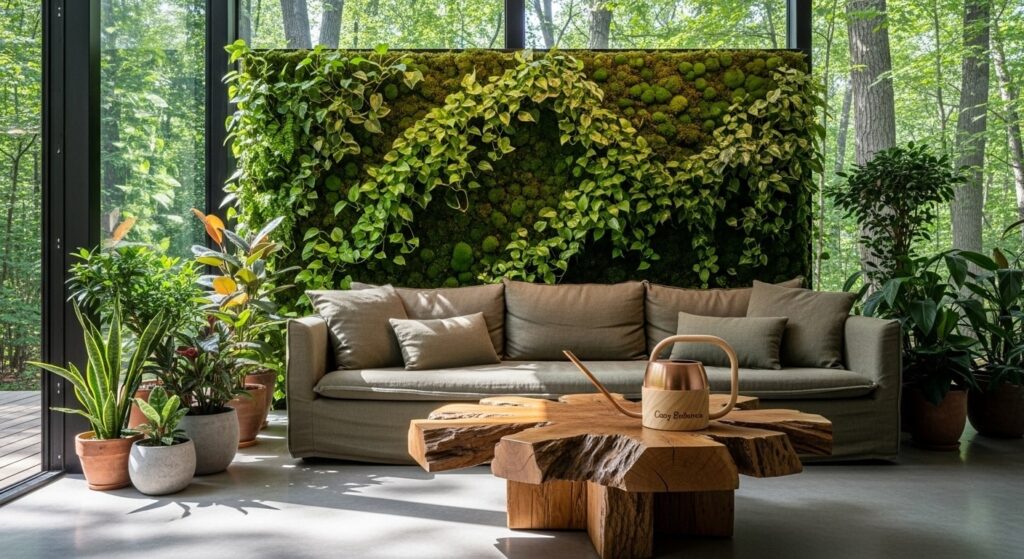
The Vibe: Restorative, peaceful, and life-affirming, a biophilic home creates a serene sanctuary. It serves as a tranquil retreat, where the boundaries between the constructed environment and the natural world are seamlessly blurred, fostering a harmonious connection with nature.
Japandi: The Best of Both Worlds
Japandi is an emerging and captivating design trend that perfectly marries the essence of Japanese minimalistic aesthetics with the practical functionality of Scandinavian design. This unique style effortlessly blends the clean, uncluttered lines and Zen principles characteristic of Japanese design with the inviting and cozy charm associated with the Scandinavian concept of hygge. As a result, Japandi creates spaces that are both elegantly simplistic and warmly welcoming, embodying a harmonious balance between two distinct yet complementary design philosophies.
Key Elements: This design style is characterized by outstanding craftsmanship and emphasizes clean, simple lines. It places a strong focus on natural materials, often blending the light woods commonly found in Scandinavian interiors with the darker, more sophisticated woods typical of Japanese design. The color palette tends to be muted and neutral, promoting a calm and serene atmosphere. Furniture in this style is typically low-profile and highly functional, adhering to minimalist principles while also providing practical utility. Despite its minimalist nature, the overall aesthetic remains warm and inviting due to the use of rich and varied textures.
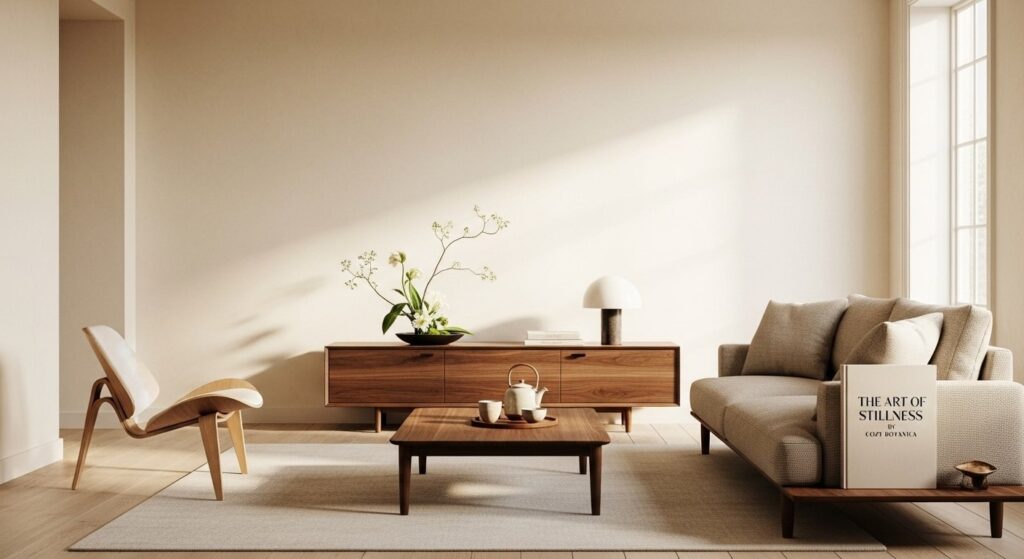
The Vibe: Zen-like in its simplicity, Japandi design embraces intentionality and elegance, creating environments that exude serenity and balance. These spaces prioritize sustainability and value quality over sheer quantity, embedding a profound appreciation for the beauty found in imperfection, a concept known as wabi-sabi.
The Art of the Mix: Eclectic, Transitional, and Personalized Spaces
Not everyone finds themselves perfectly aligned with a single, defined design style. For a significant number of people, the ideal home is an artful amalgamation of styles, time periods, and cultural influences. These eclectic aesthetics celebrate personal uniqueness and the skilled art of curating diverse elements into a cohesive and harmonious whole.
Eclectic Style: A Curated Collection
Eclectic design offers the freedom to blend various styles and elements, yet it is not a random assortment of items. Instead, a well-executed eclectic space emerges from the thoughtful curation of diverse elements, unified artfully through the clever use of color, texture, and scale to create a balanced and cohesive environment.
Key Elements: Achieving harmony is essential in an eclectic space. This style allows you to combine a modern sofa with an antique rug and industrial lighting fixtures, creating a unique blend of old and new. The elements are tied together by a consistent color palette or a recurring pattern, maintaining unity across the room. Ultimately, it’s about seamlessly merging different pieces that resonate with you into a cohesive and inviting design.
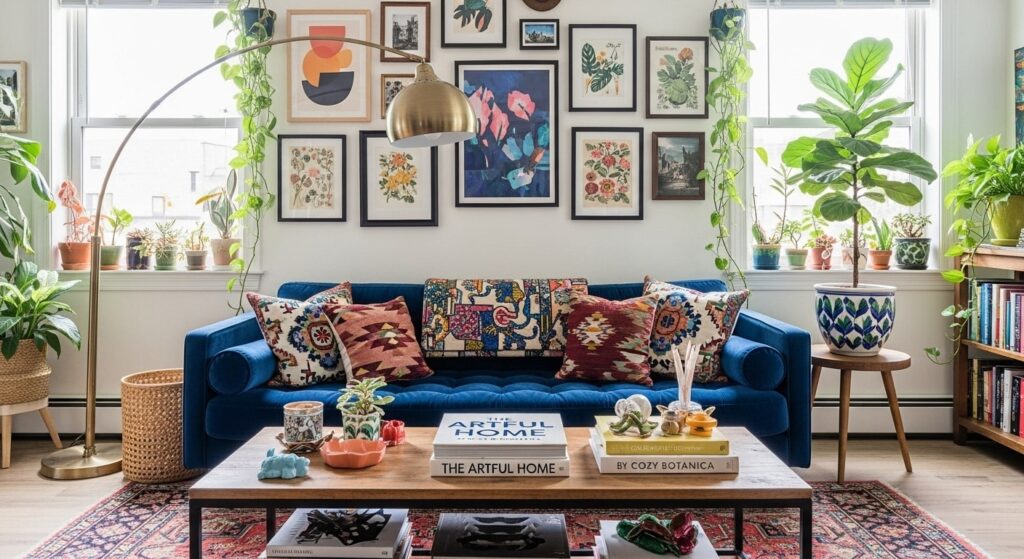
The Vibe: Innovative, unexpected, and highly individualized, eclectic homes are a reflection of the inhabitants who reside within them. They narrate a compelling story through the variety of elements displayed, each chosen piece revealing aspects of the owner’s personality, world adventures, and distinct preferences.
Japandi: The Best of Both Worlds
Japandi is an emerging and captivating design trend that perfectly marries the essence of Japanese minimalistic aesthetics with the practical functionality of Scandinavian design. This unique style effortlessly blends the clean, uncluttered lines and Zen principles characteristic of Japanese design with the inviting and cozy charm associated with the Scandinavian concept of hygge. As a result, Japandi creates spaces that are both elegantly simplistic and warmly welcoming, embodying a harmonious balance between two distinct yet complementary design philosophies.
Key Elements: This design style is characterized by outstanding craftsmanship and emphasizes clean, simple lines. It places a strong focus on natural materials, often blending the light woods commonly found in Scandinavian interiors with the darker, more sophisticated woods typical of Japanese design. The color palette tends to be muted and neutral, promoting a calm and serene atmosphere. Furniture in this style is typically low-profile and highly functional, adhering to minimalist principles while also providing practical utility. Despite its minimalist nature, the overall aesthetic remains warm and inviting due to the use of rich and varied textures.
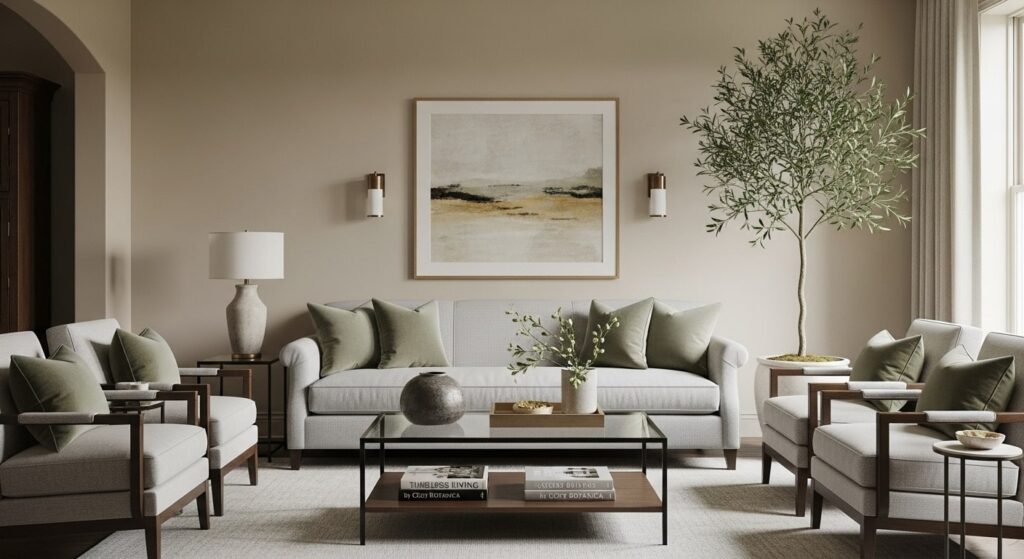
The Vibe: Zen-like in its simplicity, Japandi design embraces intentionality and elegance, creating environments that exude serenity and balance. These spaces prioritize sustainability and value quality over sheer quantity, embedding a profound appreciation for the beauty found in imperfection, a concept known as wabi-sabi.
Decoding Design Rules & Finding Your Vibe (FAQ)
Exploring the diverse and world of home décor involves understanding a range of principles and often sparks several questions. To assist you in styling your space like an expert, we’ve compiled answers to some of the most frequently asked questions.
What are the 7 basics of interior design?
Think of these as the fundamental building blocks for creating any beautiful and functional space. Mastering them will elevate your home’s aesthetic, no matter your chosen style.
- Space: The physical boundaries of a room. This includes managing positive (filled) and negative (empty) space for balance.
- Line: The use of horizontal, vertical, and dynamic lines to guide the eye and define a room’s shape.
- Form: The shape of objects within a space, whether geometric or organic.
- Light: Both natural and artificial lighting, used to set the mood and highlight features.
- Color: The use of a color palette to create a specific atmosphere and unify the space.
- Texture: The surface quality of objects (e.g., rough, smooth, soft), which adds depth and interest.
- Pattern: The repetition of a design, used to add energy and detail.
What is the 60-30-10 (or 70/30) rule in interior design?
This is a classic color rule that helps create a balanced and harmonious palette. The numbers are a guide for distributing colors throughout your space:
- 60% is your dominant color: This is usually the color of your walls and largest furniture pieces, serving as the main backdrop.
- 30% is your secondary color: This color should support the main color and is often used for curtains, accent chairs, or smaller furniture.
- 10% is your accent color: This is your pop of personality! Use it for decorative accessories like throw pillows, artwork, and small decor items.
What is the 3-5-7 rule for decorating?
This is a simple guideline for arranging decor. The idea is that objects grouped in odd numbers are more appealing, memorable, and effective than even-numbered groupings. For example, arrange a cluster of 3 vases on a console table, a stack of 5 books on a coffee table, or a gallery wall with 7 frames. It creates a sense of natural, dynamic balance.
Can I mix different styles in one space?
Absolutely! In fact, some of the most interesting and personal homes do just this. As we saw with Eclectic and Transitional styles, mixing is an art. The key to success is finding a common thread to tie everything together. This could be a consistent color palette, a repeated material (like brass or a specific wood tone), or a similar level of formality. Start small, trust your instincts, and don’t be afraid to experiment.
Conclusion: Your Home, Your Masterpiece
Learning about interior design styles is not about following strict rules. It is about finding a way to show your personal ideas. You might like the classic style of Traditional design. You might prefer the simple and cozy feel of Scandinavian living. Or you might want a unique mix that is your own. Your home should be your safe place.
Use this guide as your starting point. Pin images you love, identify the common threads, and start experimenting. The most beautiful homes are not just a collection of trends—they are a reflection of the lives and stories lived within them.
What’s your signature style? Share your favorite aesthetic in the comments below!
